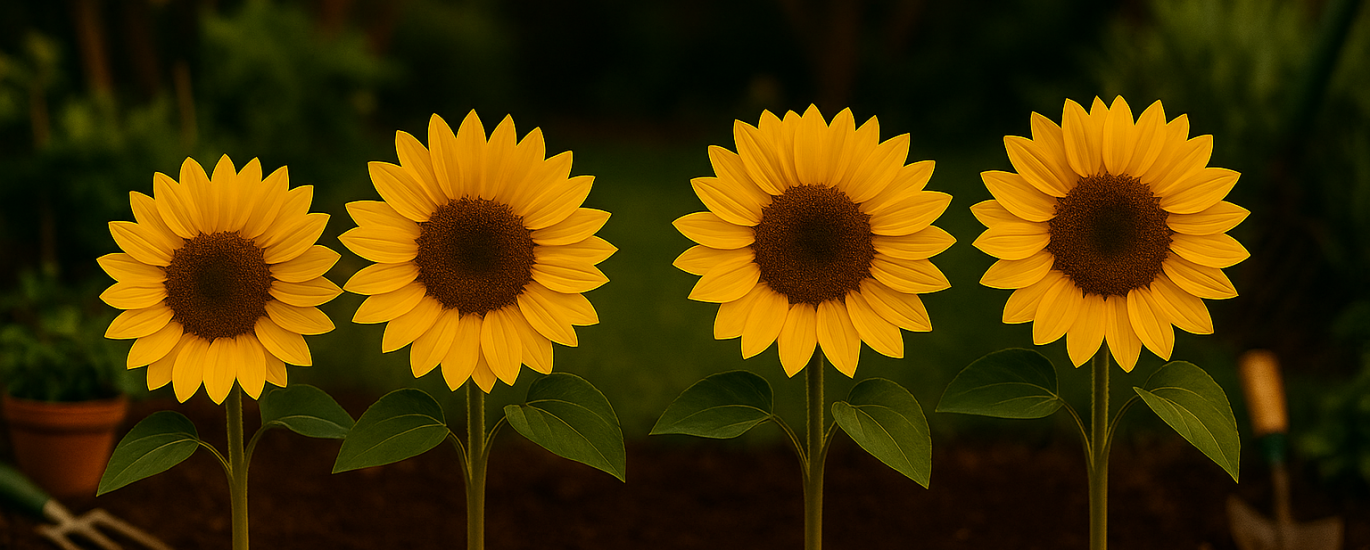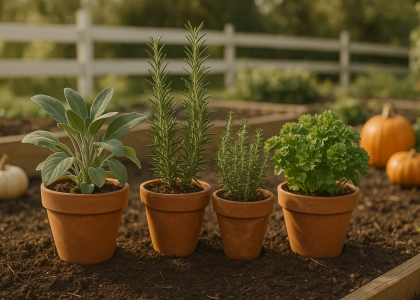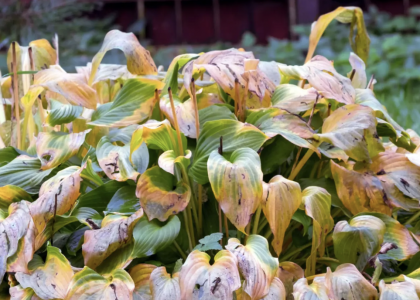Table of Contents
- Why Sunflowers Are Perfect for Every Gardener
- Understanding Sunflower Varieties
- How to Grow Sunflowers from Seeds
- Caring for Sunflowers Through the Seasons
- Common Problems & How to Fix Them
- Harvesting & Enjoying Your Sunflowers
- Final Thoughts — The Joy of Growing Light
Why Sunflowers Are Perfect for Every Gardener
Sunflowers (Helianthus annuus) are among the easiest and most rewarding plants to grow — perfect for beginners who want instant success and for experienced gardeners who crave beauty and pollinator life in their garden.
They thrive in almost any sunny spot and bring color, wildlife, and optimism to your outdoor space.
Why they’re beginner-friendly:
- Fast-growing and low-maintenance
- Adaptable to most soils
- Loved by bees, butterflies, and birds
- Great for both small pots and open gardens
Understanding Sunflower Varieties
Sunflowers aren’t just tall yellow giants — they come in a range of sizes, shapes, and colors perfect for every garden type.
| Type | Height | Best For | Bloom Time |
|---|---|---|---|
| Giant varieties (Russian Mammoth, Titan) | 8–12 ft | Garden borders | Mid–late summer |
| Dwarf varieties (Teddy Bear, Little Becka) | 1–3 ft | Pots, balconies | Early summer |
| Branching types (Autumn Beauty, Moulin Rouge) | 4–6 ft | Continuous blooms | Summer to early fall |
Tip: For a long-lasting display, combine early dwarf and late giant varieties — they’ll bloom in succession from June to October.
How to Grow Sunflowers from Seeds
1. Choose the Right Spot
Sunflowers need at least 6–8 hours of full sunlight per day.
Pick a sheltered spot with well-draining soil — they dislike soggy roots.
2. Prepare the Soil
- Loosen the top 12 inches of soil
- Mix in compost or aged manure for nutrition
- Keep soil pH between 6.0–7.5 (neutral to slightly acidic)
3. Planting Seeds
- Timing: Late spring (after frost danger passes)
- Depth: 1 inch deep
- Spacing:
- Dwarf types: 6–8 inches apart
- Tall varieties: 12–18 inches apart
- Water gently but deeply after sowing
4. Indoor Sowing Option
In cooler climates (Zones 4–6), start seeds indoors 3–4 weeks before the last frost.
Transplant once seedlings reach 3–4 inches tall.

Caring for Sunflowers Through the Seasons
Spring: Getting Started
- Protect young seedlings from slugs or birds (use mesh or garden netting).
- Water regularly — about 1 inch per week if rainfall is low.
Summer: Strong Growth
- Stake tall varieties to prevent wind damage.
- Fertilize once mid-season with a balanced 10-10-10 formula.
- Deadhead faded blooms on branching types to encourage continuous flowering.
Autumn: Finishing Strong
- Let seed heads dry on the plant for bird feeding.
- Collect seeds for next season once the back of the head turns brown.
Common Problems & How to Fix Them
| Issue | Cause | Solution |
|---|---|---|
| Yellowing leaves | Overwatering | Water deeply but less frequently |
| Floppy stems | Not enough sunlight / poor soil | Stake and enrich with compost |
| No blooms | Too much nitrogen | Switch to phosphorus-rich fertilizer |
| Aphids or mites | Dry conditions | Spray with neem oil or insecticidal soap |

Harvesting & Enjoying Your Sunflowers
1. For Fresh Bouquets
Cut blooms early in the morning before full sun exposure.
Trim stems under water to extend vase life.
2. For Seeds
Allow heads to dry on the plant, then cut and hang upside down in a dry, ventilated area.
Rub off seeds and store them in airtight jars.
3. For Wildlife
Leave a few flower heads outside — finches and chickadees will thank you.

The Joy of Growing Light
Growing sunflowers is more than gardening; it’s an act of optimism.
Each seed is a promise — a small reminder that even the simplest effort toward care can bring bright, lasting beauty.
Whether you plant a single pot on your balcony or a full border along your fence, these golden blooms will follow the sun — and so will you.
Greenmuse Resources





